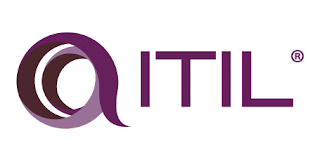Hold a marker in your hand and close your eyes for a moment.
Done?
Now, we want you to travel back to the time when you are sitting on your mother’s lap. See that pictured wordbook in her hand from which you have learned the alphabets and the words being form by them?
Take the pictured wordbook from your younger self for a while. Cross the word Apple being formed by A with a stroke of the marker, and write Agile.
This makes sense. Isn’t it?
At your workplace, the projects being handed over to you are getting crazier with the passing days. We know that you badly wish to make a time machine, travel back to the day you were born and start learning about the better ways of project management.
Well, when agile has got your back, you don’t have to do that anymore!
Want to know how?
In this blog, we are going to tell you all about Agile, its concepts, and its benefits in business. If you have any queries about the same, don’t forget to drop a comment below!
Let’s start with what Agile exactly is.
Concept of Agile:
The world started to witness the early rays of Agile during the year of 1990 itself.
In the year 1990, a number of lightweight software development methods evolved in reaction to the prevailing heavyweight methods that critics described as overly regulated, planned, and micro-managed. These included Rapid Application Development (RAD), from 1991; the Unified Process (UP) and Dynamic Systems Development Method (DSDM), both from 1994; Scrum, from 1995; Crystal Clear and Extreme Programming (XP), both from 1996; and feature-driven development, from 1997. Although these all originated before the publication of the Agile Manifesto, they are now collectively referred to as agile software development methods. At the same time, similar changes were underway in manufacturing and aerospace.
Maybe you are all curious about the Agile Manifesto by now. Isn’t it?
Let us tell you all about it from the beginning then. In 2001, on one sunny day at Utah, 17 bright software developers met at a resort to discuss the lightweight methods which are the main core of Agile Methodology. Kent Beck, Ward Cunningham, Dave Thomas, Jeff Sutherland, Ken Schwaber, Jim Highsmith, Alistair Cockburn, Robert C. Martin, Mike Beedle, Arie van Bennekum, Martin Fowler, James Grenning, Andrew Hunt, Ron Jeffries, Jon Kern, Brian Marick, and Steve Mellor published the Manifesto for Agile Software Development afterwards.
From that time till the year of 2011, the world of Agile has seen so many milestones. After crossing all of them, in 2011, the Agile Alliance created the Guide to Agile Practices (renamed the Agile Glossary in 2016), an evolving open-source compendium of the working definitions of agile practices, terms, and elements, along with interpretations and experience guidelines from the worldwide community of agile practitioners.
Let’s move to the part where Agile has brought a revolution in the world of software development.
Agile in Software Development:
Agile Software Development refers to a group of software development methodologies based on iterative development, where requirements and solutions evolve through collaboration between self-organizing cross-functional teams. Through applying Agile methodology in Software Development, you can achieve a more precise and well-built structure of project management that will involve frequent inspection of the entire process and adoption of new technologies. Also, Agile Software Development demands a leadership philosophy that encourages teamwork, team organization, and accountability. It involves a set of engineering best practices that are intended to allow for rapid delivery of high-quality software
Want to explore the different Agile methodologies? Here it comes!
Different Agile Methodologies:
There are so many Agile methodologies that can be used for project management. Although, if we talk about the most broadly used methodologies, then they would be:
Agile Scrum Methodology: Scrum is a lightweight agile project management framework that can be used to manage iterative and incremental projects of all types.
Lean Software Development: Lean Software Development is an iterative Agile methodology that focuses the team on delivering value to the customer through effective value stream mapping.
Kanban: Kanban is a highly visual workflow management method that focuses on continuous collaboration and encourages ongoing active learning and improvement by defining the best possible team workflow.
Extreme Programming: Extreme programming promotes high customer involvement, rapid feedback loops, continuous testing, continuous planning, and close teamwork to deliver working software at very frequent intervals, typically every 1-3 weeks.
Crystal: Crystal focuses primarily on people and the interaction among them while they work on an agile software development project.
Dynamic System Development Method: DSDM methodology has evolved to provide a comprehensive foundation for planning, managing, executing, and scaling the Agile process and iterative software development projects.
Feature Driven Development: Feature Driven Development is a model-driven, short-iteration process that was built around software engineering best practices such as domain object modeling, developing by feature, and code ownership.
Agile Tools:
Tools that are used for project management and uses any of the agile methodologies above are called agile tools.
A good Agile Tool should be able to master at-
1. Task management – Kanban or Scrum boards with projects, task lists and everything else that goes with it – from files and discussions to time records and expenses.
2. Team collaboration – Communicate updates with local and distributed teams, and share task lists, feedback, and assignments
3. Agile metrics, reporting & analytics – Time tracking and projection, easy-to-understand progress reports for stakeholders, quality assurance, and progress with tools to identify and remedy project obstacles, evaluate performance, and appraise financials.
The few best Agile Tools available in the market are Clarizan, monday.com, ProjectManager.com, Zoho Sprints, etc.
Agile practices:
Agile is broadly used in today’s world for project management. But what are the best practices which made this methodology the most lovable across the globe? Well, we listed a few out for you:
1. Iterations
2. Customer-oriented approach
3. Product backlog
4. User Stories
5. Value stream analysis
6. The importance of timeboxing
7. Scrum meetings
8. Speed demo meetings
9. Retrospective meetings
10. Integration
11. Test-driven development
12. Burndown charts
13. Automated test
14. Requirement Prioritization
15. In-pairs programming
16. Release planning
Benefits of Agile Methodology In Business:
When we talk about Agile Methodology in general, the iterative and incremental method of management focuses on helping teams in an evolving landscape and rapid delivery of business value. Agile methodologies address the customer needs perfectly. Let’s see what else they can do.
High Product quality: With the continuous integration and daily testing process, Agile Methodology keeps the quality of your product high.
High Customer Satisfaction: Agile gives you the opportunity of demonstrating working functionalities to the customer in every sprint view. Hence, you feel more involved with the customer which leads to higher customer satisfaction.
Reduced Risk: Agile uses user stories with business-focused acceptance criteria to define product features. It focuses on features depending on the needs of real customers. Hence, each feature incrementally delivers value and not just an IT component. Agile also provides the opportunity to beta test software after each iteration, gaining valuable feedback early in the project and providing the ability to make changes as needed.
Faster ROI:
Since agile development is iterative, the features are delivered incrementally. Which is why benefits are delivered early while the product is in the development process.
Jobs For Agile Professionals:
The demand for Agile Professionals is getting increased in the IT world every day. If you check naukri.com right now, you will see a total of 29445 openings for Agile professionals.
In US, an Agile project manager is earning $ 112,786 per year.
There are various certification courses available for you according to your job profile if you want to be a master in the field of Agile. They are as follows:
Certified Scrum Developer: This certification is ideal for IT professionals who support software development projects. It will also benefit - architects, business analysts, developers, QA testers and engineers, and project or product managers who are interested in learning more about Scrum and leading Agile projects. CSM credential holders can undergo the 3-day training to achieve this credential.
Certified Scrum Master: This certification is ideal for team members or team leads, software developers, software testers, architects, product managers, product owners.
Certified Scrum Product Owner: This certification is specifically designed for Project managers, product managers, product owners, software development managers, and product owners.
So let’s do that and stay one step ahead from other project managers of your field. Shall we?
Source: novelvista.com













